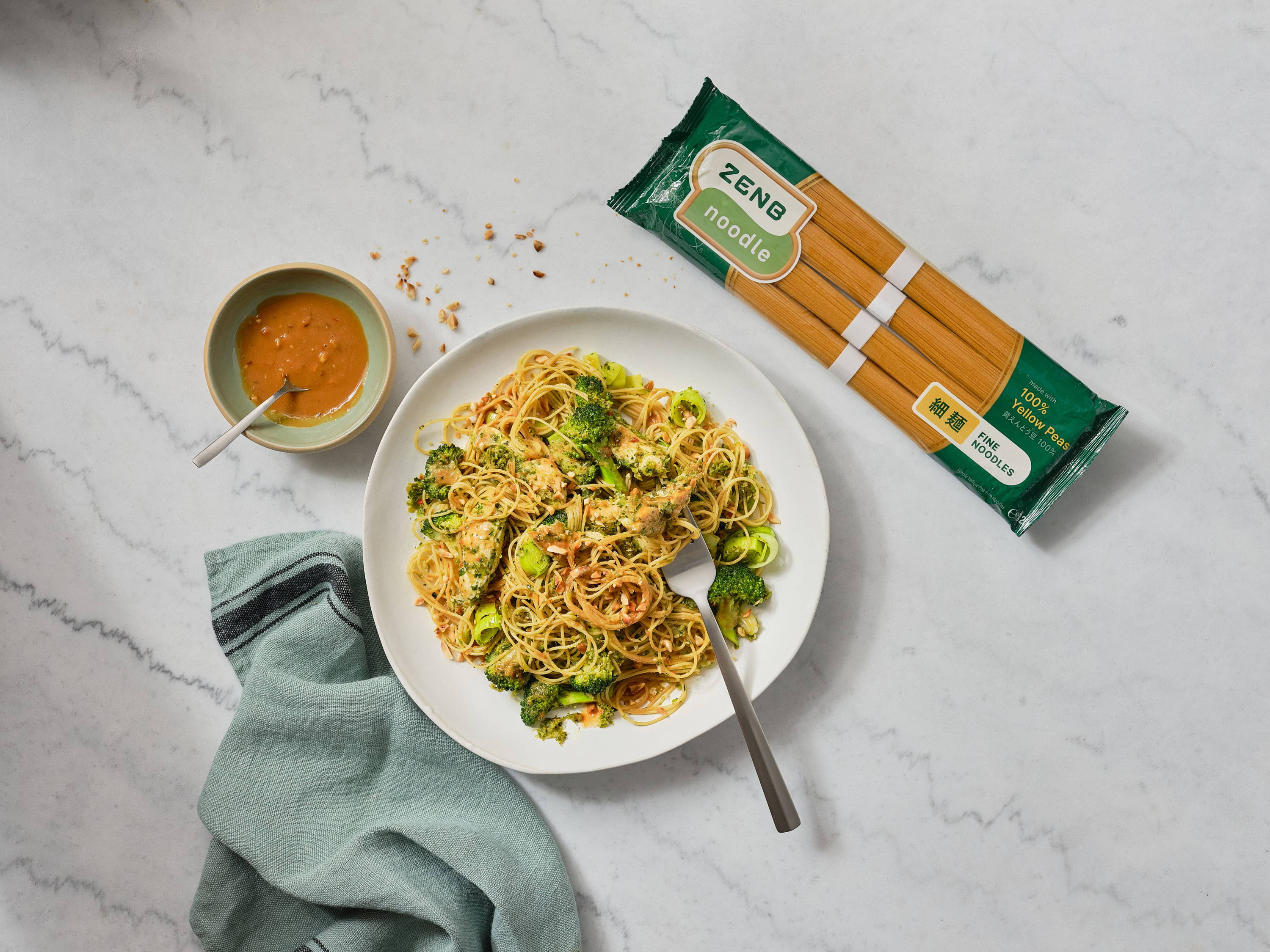INTRODUCING ZENB YELLOW PEA NOODLES
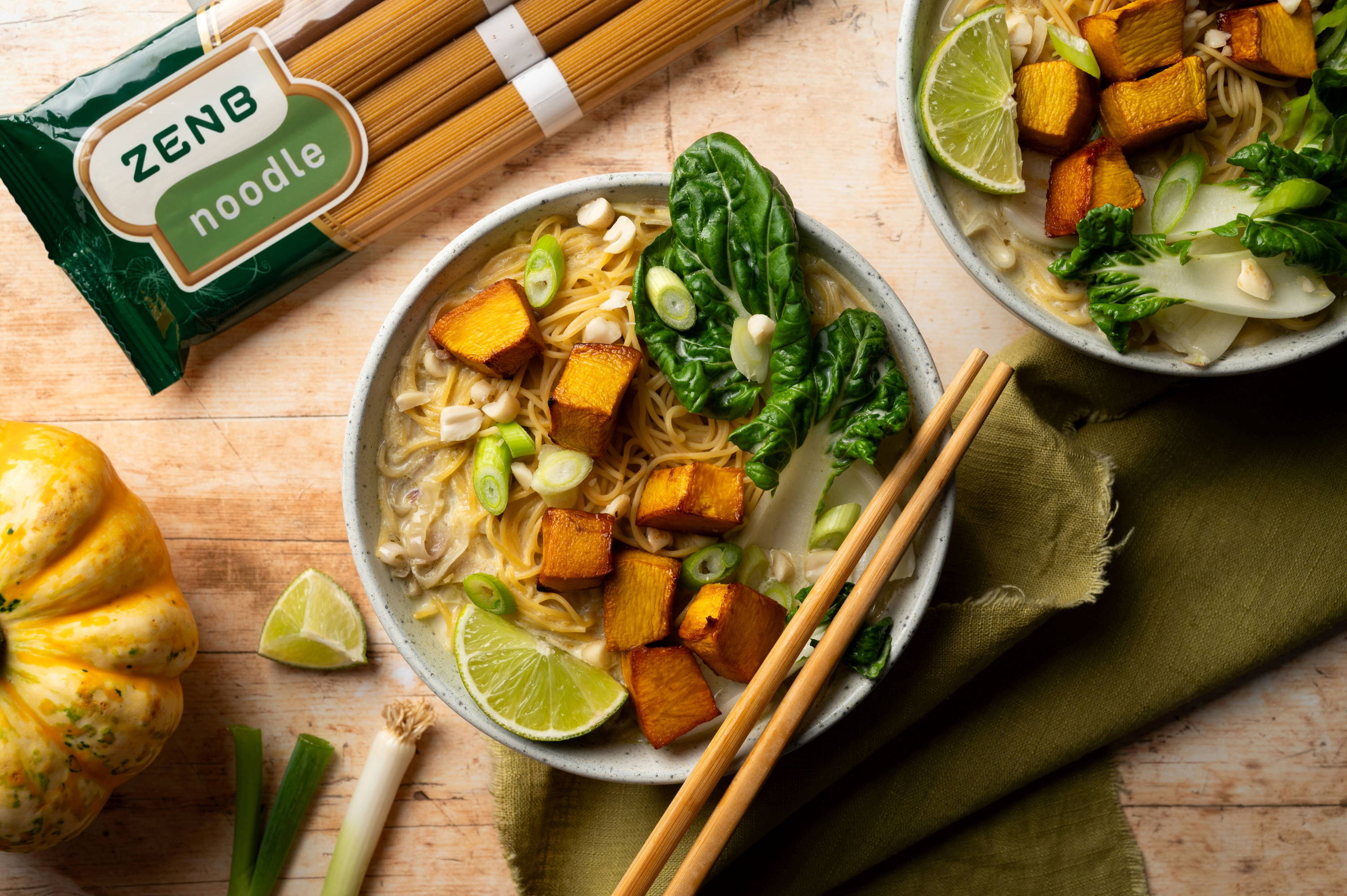
Have You Heard? The Noodles Have Arrived
The wait is over...
We are so excited to introduce you to our latest product, Japanese fine noodles. They are made with the same ingredients as our delicious pasta varieties, always 100% yellow peas. Because we believe you, our customer, deserve only the best, we have collaborated with the Japanese division of our business to bring you the most authentic and tasty noodles for your newest meal obsession.
Already a top seller on Amazon, our noodles come straight from Japan and are top quality. These noodles are thinner than the spaghetti we sell, pre-portioned for you, cook more quickly, and are suited to a wide variety of dishes. Read on for recipe ideas and more on the not-so-humble noodle!
Why choose ZENB noodles?
If you’re new to ZENB, you might be wondering why we are so passionate about yellow peas. It is a good question! The answer is two-fold: yellow peas are a good source of nutrition and are a sustainable choice for our planet.
First, let's address why yellow peas are good for you. Yellow peas are naturally gluten free, so whether you are gluten intolerant or not, you can enjoy our pasta and noodles.
Yellow peas are also naturally high in protein, high in fibre, a plant-based source of iron, and high in phosphorus and potassium. The main function of phosphorus is the maintenance of bones and teeth, while also is essential for the body to build protein. Potassium helps regulate the amount of fluid in our cells, regulating muscles including the heart, and a vital component in absorbing proteins and carbohydrates.
Science. Phew!
By now, you’re probably familiar with the idea that a plant-based diet is a more sustainable choice for the planet. But if you enjoy meat, making environmentally friendly choices around incorporating more plant-based food into your diet can make a big impact. Yellow peas are a fantastic choice because they are a rather amazing plant. Not only do they need less water to grow than durum wheat, but yellow pea plants absorb nitrogen from the air and return it to the soil. This means that they require less commercial nitrogen fertiliser and, better yet, the soil stores the nitrogen from yellow pea plants for other plants to use when crops are grown in rotation. Yes, a little complicated to get your head around, but who said being green (or yellow, for that matter) was easy?
Interested in more info on why yellow peas are an environmentally friendly choice?
Check out our blog post on why yellow peas are a greener choice.
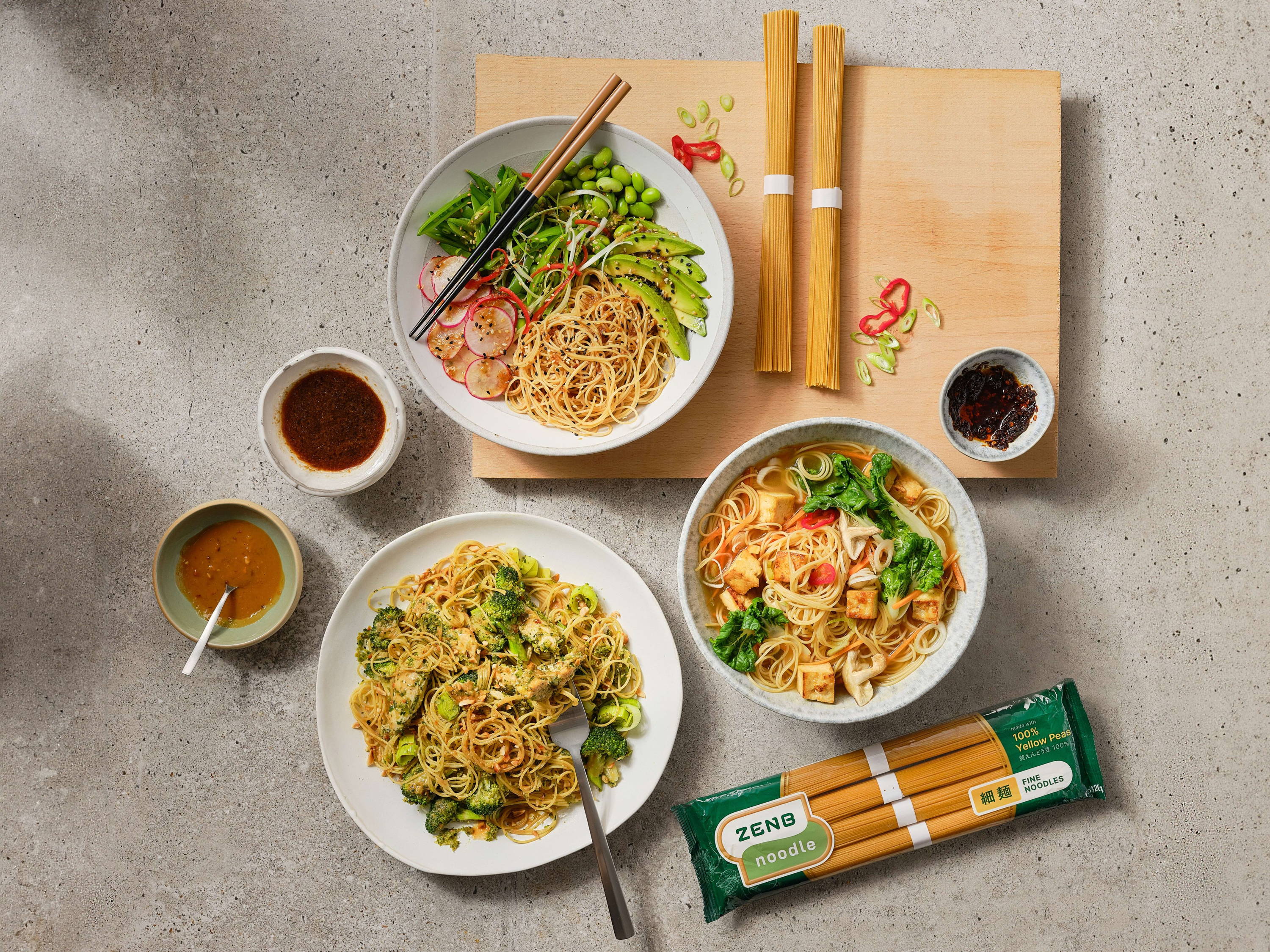
What are Noodles?
But let’s back up for a minute. What exactly are noodles? Well, on a very basic level, they are a food typically made from an unleavened dough which is rolled and cut, stretched or extruded and cooked in hot liquid. Noodles are a staple food in many cultures. Asian noodles can be broadly divided into three groups: wheat, rice, and glass or cellophane noodles.
Wheat noodles include chow mein and lo mein noodles (also called egg noodles), traditional ramen noodles (treated with an alkaline substance called kansui to make them curly), soba noodles (flavourful buckwheat noodles, often served cold), somen noodles (made from white wheat flour, also often served cold), and udon noodles (thicker Japanese noodles). Asian wheat noodles differ from pasta in that the noodles are usually stretched, to encourage the gluten to develop. This gives these noodles their distinctive chewy texture. Wheat noodles vary in flavour, but are probably the most familiar to us in the UK.
Rice noodles also come in all kinds of lengths and thicknesses and can be found in almost every Asian and Southeast Asian country. From the familiar tagliatelle style of Pad Thai to Vietnamese-style rice vermicelli, or banh pho used (funnily enough) in pho, all the way to tteok, which are technically rice cakes but often prepared like noodles. Rice noodles often provide tons of texture but not always tons of flavour, as rice tends to be very delicate in flavour.
Glass or cellophane noodles are made from the starch of anything besides wheat or rice. This ranges from mung bean to tapioca to sweet potato. In spite of the fact that they are diverse in their origins, the making of these noodles involves separating the starch from the source, so the noodles themselves don’t tend to taste of much. These noodles tend to be very thin and turn almost see-through (or glasslike!) once they are boiled. Generally speaking, they have a very springy texture when boiled but also go very crispy when deep fried. Great as a flavour vehicle, not so great on their own.
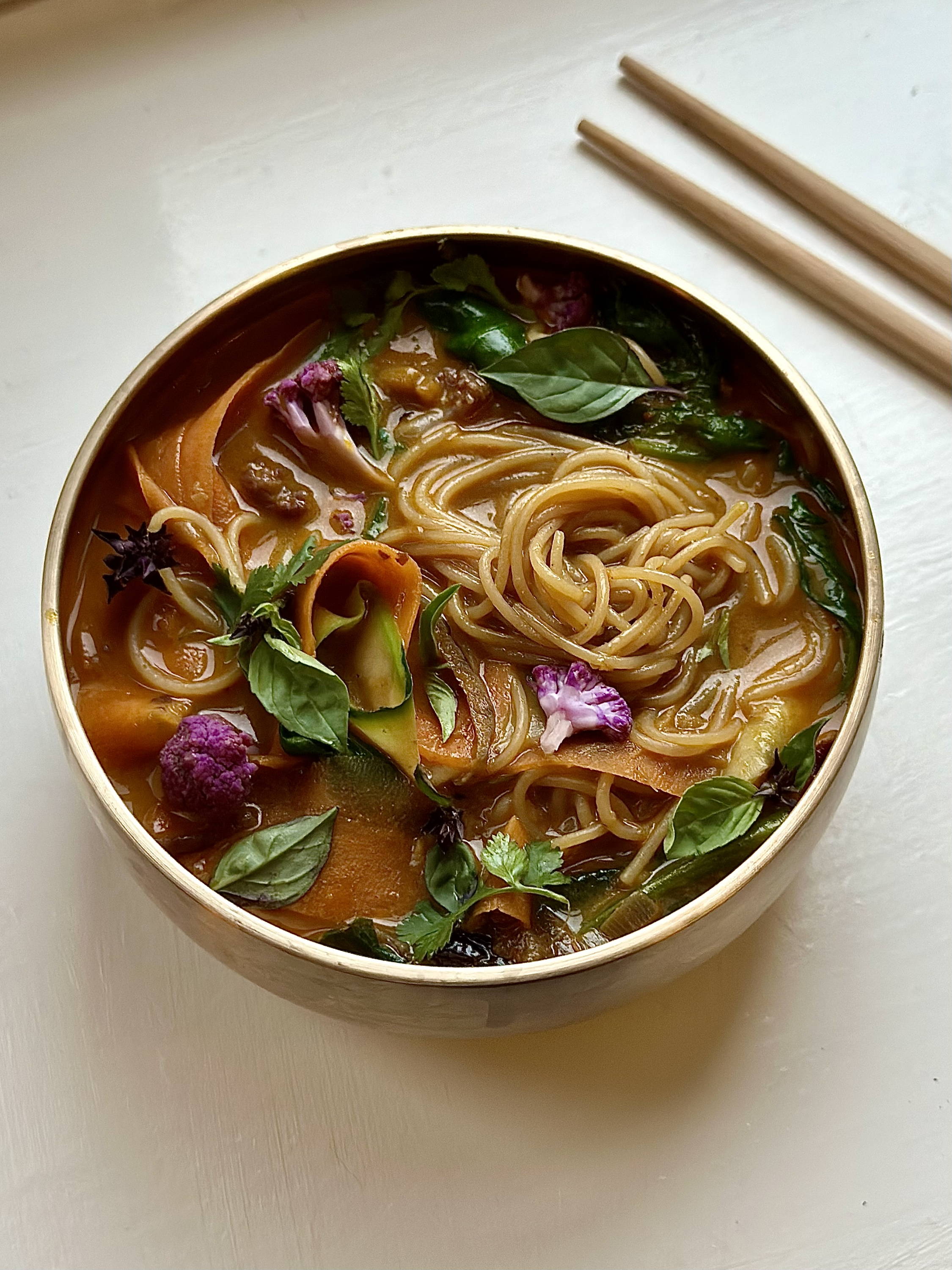
You might wonder how many different kinds of noodles there are, but it is a bit like asking how long is a piece a string, because the answer is hundreds. For comparison’s sake, Escoffier Online suggests that there are around 350 different shapes of pasta, so it is safe to say that across all of Asia, where the noodle is definitely an absolute staple, the kinds of noodles are pretty much infinite. After all, in China alone, there are over 1,200 different kinds of noodles.
The closest noodle to compare our noodle to would probably be a somen-style or soba style noodle, though our noodles can be served hot as well as cold. It is a straight noodle, so not curly like a ramen noodle and full of flavour a bit like a soba noodle. In Japan, our noodle is marketed as a somen noodle, but our noodles don’t have salt and are made from (you guessed it!) 100% yellow peas.
To sum up, in colloquial speech, noodles and pasta are the same thing. But when we’re talking about noodles, we usually mean a dish with origins broadly in Asia and when we say pasta, we usually mean a dish broadly from Europe (more specifically Italy). So, maybe pasta sits under the umbrella of noodles, but noodles don’t necessarily sit under the umbrella of pasta.
What is the origin of noodles?
According to Jen Lin-Liu, author of On The Noodle Road: From Beijing to Rome, with Love and Pasta, the earliest written record of noodles is in a dictionary from around the third century AD, in China. These noodles were made from bread dough and cooked in boiling water - a version of this dish is still cooked in northern China today. She is quick to note, however, that due to the nature of food history, the documented use of noodles is likely years, possibly even centuries after people began actually consuming them.
It seems that the development of pasta in Europe was a completely separate evolution. There used to be a widely accepted idea, now agreed to be a myth, that it was the explorer Marco Polo who brought noodles to Europe from China. But further research has revealed that pasta was eaten as far back as the Greek and Roman empires.
In Asia, noodles were first made in China, when larger-scale wheat grinding became more widely available, round about 2,000 years ago (give or take a few hundred years). With trade, travel, and expansion, the noodles began to expand across Asia, adapting and evolving to suit each culture’s taste.
Noodles first came to Japan around 800AD (about 1200 years ago), but didn’t really become popular until the 1800s. Back then, the most popular noodle dish wasn’t ramen or even udon, but somen noodles - the thin wheat noodles, which are often served cold and associated with the summer. Legend has it that somen was first made by the son of a chief priest, in order to save a town from hunger. By contrast, ramen noodles (which used to be called Chinese-style noodles in Japan) are actually relatively young, only coming to popularity in the 1910s, when an influx of Chinese immigrants brought Chinese cuisine to greater popularity. Today, ramen is probably Japan’s most recognisable noodle export.
Our noodles, which are made in Japan, are most like somen noodles, as they are straight and very thin. Unlike somen noodles, however, our noodles do not contain salt and oil (only yellow peas!), and can be enjoyed cold in a noodle salad or hot in a warming broth.
As our noodles are made in Japan ( can you tell we are proud of that?), you’ll notice that there is some Japanese writing on the packaging. These are the Japanese characters for “Fine noodles”, which is a kind of catch-all term for thin noodles that can be used in both cold and hot dishes.
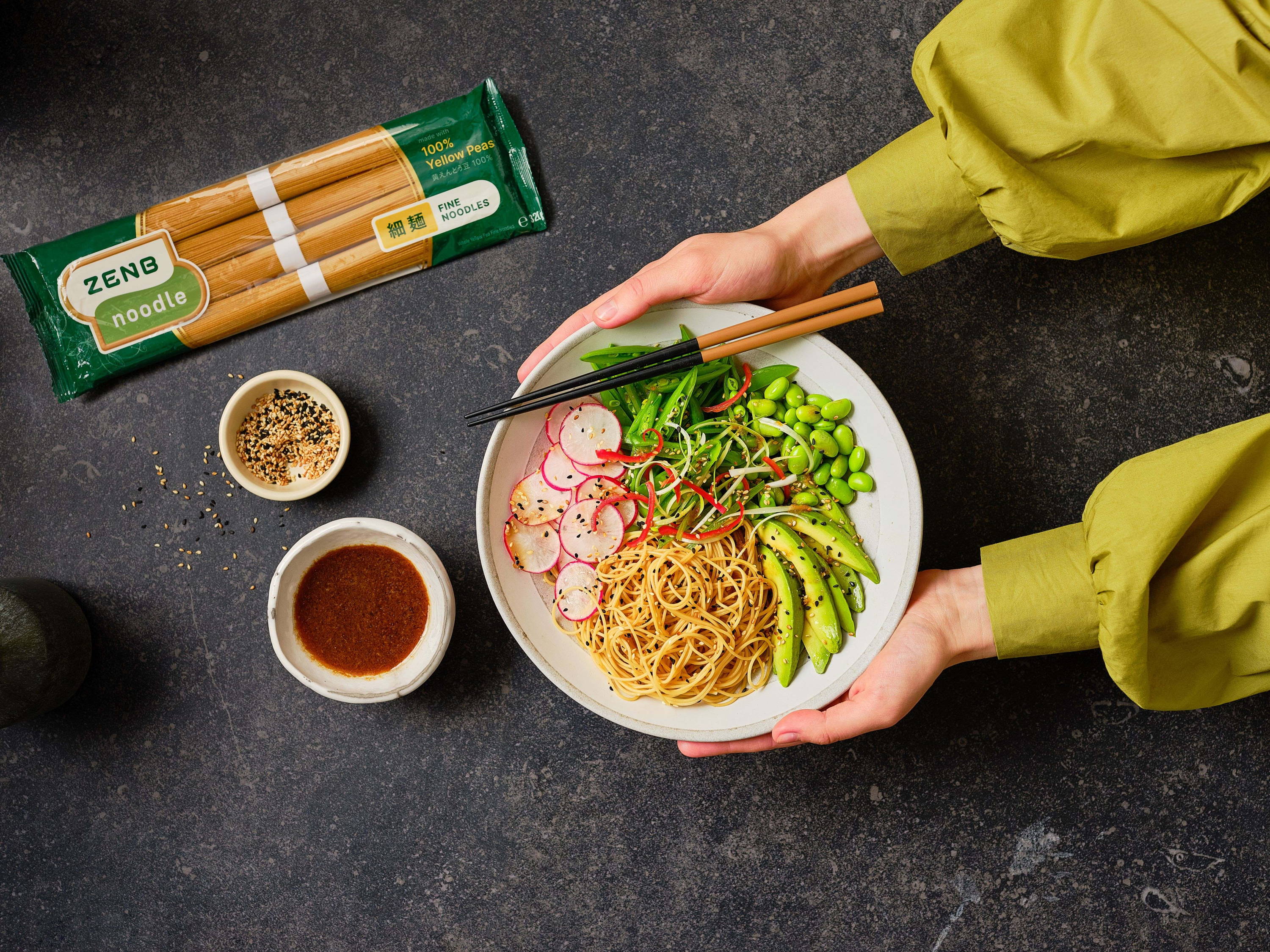
ARE NOODLES GLUTEN FREE?
As you now know, traditionally, noodles are either made from wheat, rice, or other starches. Many of the noodles we are most familiar with here in the UK are made from wheat. Sometimes called egg noodles, these are the ubiquitous dried noodles you’ll find in nests in the Asian section of Tesco. You might also be familiar with udon (also wheat-based), or rice noodles (wide flat, vermicelli), or glass noodles (those are the starch-based ones). If you have to be gluten free, the thing about rice noodles and glass noodles is that while the texture can be fantastic, particularly if you cook them properly, the flavour tends to be a bit bland.
The great thing about our noodles is that they are indeed 100% gluten free, as the only ingredient in them is yellow peas. Not only that, the yellow pea imparts a deliciously savoury, slightly nutty flavour, perfect for adding a deeper flavour profile to your favourite dishes. And the benefits don’t stop there! Our noodles are high in protein (so keep you satisfied for longer) and are a source of fibre, essential for (ahem) regularity.
If you want to read more about gluten free, check out some of our recent blog posts on the subject.
ALSO, did you know that our fusilli (made with exactly the same ingredients as our noodles!) just won a Gold Award in the Free From All 14 Allergens category at the Nourish Awards 2023? We’re very proud of that accolade, particularly given how competitive the free-from space is becoming!
How to cook ZENB noodles
Our thin noodles cook quickly, so make sure you are paying attention to get your desired result!
To cook our ZENB thin noodles, simply bring water to a boil, add your noodles, turn off the heat and allow them to steam through for 5 minutes.
They should be tender, not falling apart. If you are adding them to a cold dish, it is best to let them soak an extra minute and then rinse them under cold water.
If you are adding them to a broth, no need to pre-cook! Just prepare your broth, add the desired amount of noodles, and give them time to absorb the broth before enjoying.
What to eat ZENB noodles with
ZENB noodles are super versatile and are delicious hot or cold. If you are keen to try a cold noodle bowl, these noodles are great for a noodle salad, adding perfect texture and a depth of flavour. Or perhaps you want to up your ramen game with an earthy and warming broth, adding our noodles for a little extra protein and fibre? And if you’re in a hurry, our noodles are brilliant for a quick week-night stir fry.
Have a look below for some recipe ideas and don’t forget, if you try one of these recipes, why not share it with us on our instagram! @Zenb_UK #zenbnoodles
And in closing…
Picture this: you are in you’re kitchen, planning your weekly food shop, wondering what on earth to make for dinner. The same meals and recipes dance round your head. But then something else bubbles up… And inspiration strikes!
ZENB noodles: They are adaptable and versatile. They are vegan and gluten free. They are authentic and delicious. So what are you waiting for?
You’ll try a new recipe this week. Maybe it will be a stir-fry. Maybe a noodle salad. Maybe a ramen bowl. But whatever noodle dish you choose, eating this week will be considerably more exciting than it was last week.
And in the meantime, here's some fun noodles facts!
DID YOU KNOW?
Vietnam eats the most instant noodles per capita with 87 servings a year in 2021?
The longest noodle in the world was made in China in 2017 and measured more than 3 kilometres!
The oldest noodle in the world was a 4,000 year old noodle found in China made not from wheat flour but millet.
Because they are the seeds of a flower, yellow peas are technically a fruit!







